|
|
|
|
The Russian Segment Most critical functions of the International Space Station, such as refueling, propulsion and life support, especially in the early years of the project, were provided by the Russian components. According to estimates made in 2015, Russia invested around 10 percent of the program's cost, while it had access to around 30 percent of the station's resources. (744) 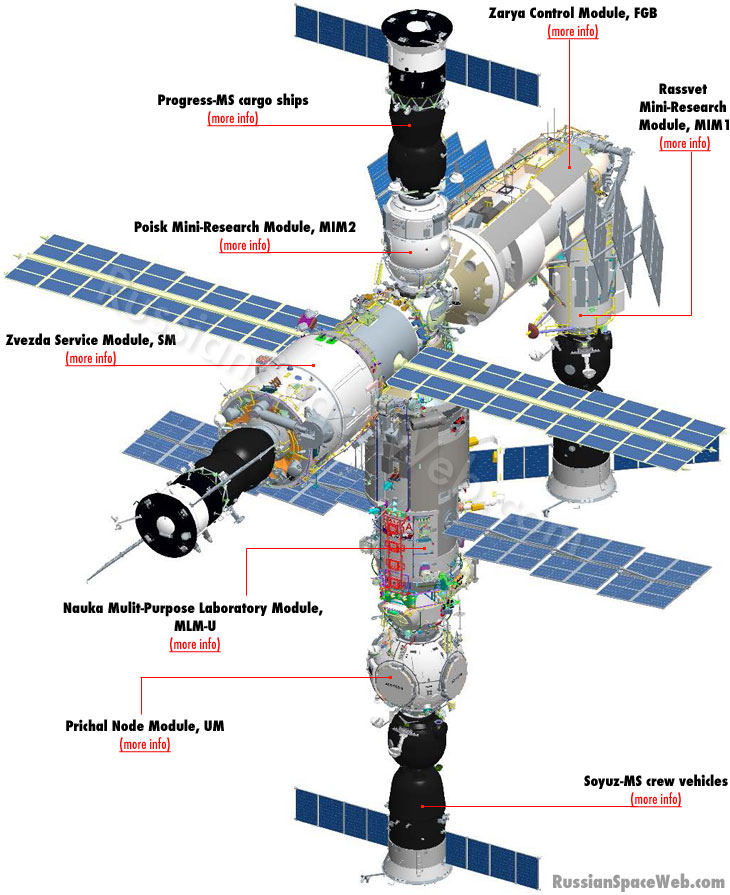 Configuration of the Russian ISS Segment possible after the arrival of the Prichal module in November 2021. Russian ISS Segment at a glance:
|
|
|||||||||||||||||||
| HISTORIC AND FLYING MODULES | |||||||||||||||||||||
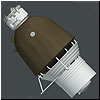 |
Russia first appeared on the scene of what would become the International Space Station after NASA had concluded that it would be able to address the issue of the emergency return from the station quickly and economically by incorporating the veteran Soyuz spacecraft into the design of the outpost. |
||||||||||||||||||||
|
The Zarya ("sunrise") control module became the first element of the ISS to be launched. It was used for maneuvering and power supply at the initial phase of the station's life and later became a storage vehicle for cargo and propellant. |
|||||||||||||||||||||
|
|
The Zvezda Service Module became Russia's main contribution into the ISS project. The spacecraft was originally conceived as a core of the Mir-2 space station. In 1993, the Russian Space Agency, facing financial uncertainty, offered NASA to incorporate the module into the US space station. |
||||||||||||||||||||
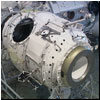 |
The Docking Compartment, also known as Pirs ("Pier") or SO1 from the Russian Stykovochny Otsek-1, provides the docking location for transport ships visiting the Russian Segment of the the International Space Station, ISS, and also serves as an airlock for spacewalks on the exterior of the outpost. |
||||||||||||||||||||
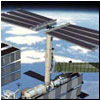 |
Science and Power Platform, NEP The Science and Power Platform, NEP, originated in the Mir-2 project, where a special truss was expected to carry solar panels, power-generating concentrators, radiators and scientific payloads. The truss would extend on both sides of Mir-2. After Mir-2 and NASA's Freedom programs merged in 1993, NEP was reconfigured for the new project. |
||||||||||||||||||||
|
Universal Docking Module, USM (INSIDER CONTENT) Universal Docking Module, USM, (sometimes referred to as UDM) would serve as a hub for four additional modules of the Russian segment. The 20-ton vehicle was to dock to the nadir (Earth-facing) docking port of the Zvezda service module. On the opposite (bottom) end, the UDM would have a transfer section with five docking ports for a pair of science modules, Docking Compartment-2 and transport ships. |
|||||||||||||||||||||
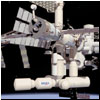 |
Research Modules, IMs At least two modules specifically dedicated to the science research were planned to be docked to the Universal Docking Module, UDM. One of the modules could be built by the Dnepropetrovsk-based KB Yuzhnoe as the Ukrainian contribution into the ISS. In any case, RKK Energia was expected to serve as main subcontractor on the project. |
||||||||||||||||||||
|
|
Stowage and Docking Module, MSS As of 1994, an additional stowage module could be docked to the nadir (Earth-facing) port of the Zarya control module. However, RKK Energia and Khrunichev respectively proposed the Enterprise module and Commercial Space Module, CSM, to replace the original stowage module. The concept of the MSS module remained on paper. |
||||||||||||||||||||
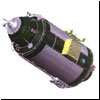 |
At the end of 1999, the US-based Spacehab Inc. announced a joint venture with a Russian contractor RKK Energia aimed to build the first privately financed and operated module for the ISS. The spacecraft originally targeted for launch at the end of 1992, would feature "a multimedia studio" for commercial broadcasts from orbit. The project never materialized. |
||||||||||||||||||||
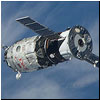 |
Poisk Mini-research Module, MIM2 The exact copy of the original docking compartment, SO1, became known as Mini-Research Module 2, MIM2, or Poisk. It was added in 2009 to the zenith (sky-facing) docking port of the Zvezda Service Module, on the opposite side from the Pirs module. |
||||||||||||||||||||
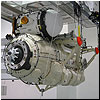 |
Rassvet Mini-Research Module, MIM1 The Mini-Research Module 1, MIM-1, Rassvet (Dawn) became the 5th permanent piece of the ISS built in Russia. It was a stopgap measure to fill the nadir docking port on the Zarya module. Without it, an originally planned addition of NASA's Node-3 to a "next-door" nadir port on the Unity/Node 1 module of the US Segment would block a safe access for Soyuz crew vehicles to the Russian Segment. |
||||||||||||||||||||
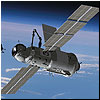 |
Nauka Multi-purpose Laboratory Module, MLM-U The Nauka Multi-purpose Laboratory Module, MLM, docked to the International Space Station, ISS, in sJuly 2021, giving the outpost a plethora of new capabilities and resuming the assembly of the station's Russian Segment after a decade-long hiatus. |
||||||||||||||||||||
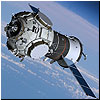 |
By mid-2000s, RKK Energia added a new element into the possible future configuration of the International Space Station, ISS, called "Uzlovoi Module" or Node Module in English. Despite its small size, a four-ton, ball-shaped module could play an extremely important role in the Russian space program. |
||||||||||||||||||||
|
FUTURE MODULES |
|||||||||||||||||||||
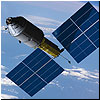 |
After the cancellation of the NEP platform development in 2000s, it was decided to transfer most its functions to a pair of NEM modules, which would be attached to side ports of the yet-to-be-launched Node module, UM. In 2012, the Russian space agency, Roskosmos, officially approved the development of a single NEM-1 module. |
||||||||||||||||||||
|
While planning for the expansion of the Russian segment of the International Space Station, ISS, in the second half of 2000s, engineers at RKK Energia conceived a new Airlock Module, ShM, which would replace a Docking Compartment, SO, currently used for spacewalks. The new design also evolved to support the orbital assembly of deep-space vehicles. |
|||||||||||||||||||||
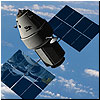 |
Around 2012, the Russian space agency, Roskosmos, quietly replaced a highly advertised first launch of the nation's cosmonauts from the new space port in Vostochny with an automated space lab. The Oka-T module designed for periodic servicing by space station crews in orbit should provide an exit strategy for the Russian space officials, who made an impossible promise to the Kremlin to fly a manned mission from the new space center in 2018. |
||||||||||||||||||||
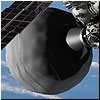 |
Half a century after Aleksei Leonov floated into open space through the inflatable airlock, the company that built his spacecraft, has jump-started work on multi-layered inflatable structures. In its annual report for 2012, RKK Energia said that the new project might pave the way for a new generation of space station modules, interplanetary spacecraft and planetary bases. |
||||||||||||||||||||
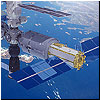 |
In 2017, Russian engineers formulated the concept of a tourist module to be included into the Russian segment of the International Space Station, ISS. It would be built on the basis of the second copy of the Science and Power Module, NEM, which was in active development at the time. Money provided, the NEM-2 module could be launched as early as 2023. |
||||||||||||||||||||
| OPERATIONS | |||||||||||||||||||||
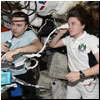 |
Science aboard the Russian ISS Segment (INSIDER CONTENT) Behind all the engineering and transport operations aboard the ISS, often overlooked is the real objective of the space station – the science. On the Russian Segment, the scientific research has increasingly taken a back seat to growing repair and maintenance work, further complicated by the worsening climate for scientific research in Russia. |
||||||||||||||||||||
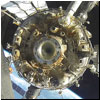 |
Specialists investigate leak on Russian ISS Segment (INSIDER CONTENT) In 2020, after weeks of painstaking search, cosmonauts aboard the International Space Station have found the elusive source of an air leak that has bugged the outpost since September 2019. In the meantime, specialists on the ground brain-stormed the actions necessary to close the gap and began looking for the culprit which could cause a potentially dangerous breach. |
||||||||||||||||||||
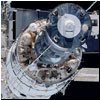 |
Search for air leak on ISS continues (INSIDER CONTENT)
Members of Expedition 65 aboard the International Space Station, ISS, keep searching for elusive sources of air loss inside the Zvezda Service Module, nearly a year after a pair of first tiny cracks has been found. |
||||||||||||||||||||
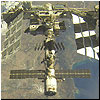 |
Into the unknown: Russia mulls ISS operations until 2030 (INSIDER CONTENT) In 2020, Russian specialists took the first steps aimed at extending the life span of the International Space Station, ISS, until the end of the decade, a non-trivial task which requires the certification of several modules, and a myriad of their components for a combined mission in orbit exceeding more than twice the record-breaking flight of the Mir space station. |
||||||||||||||||||||
| Roskosmos has directed its contractors to begin negotiations with the ISS partners on the coordinated action and the date for deorbiting the outpost, as the safe operation of the ailing Russian Segment is looking increasingly difficult. | |||||||||||||||||||||
| SYSTEMS AND COMPONENTS | |||||||||||||||||||||
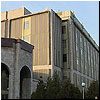 |
Ground control (INSIDER CONTENT) The flight control of the Russian ISS Segment, including Russian transport ships, is conducted from the Mission Control Center in Korolev, TsUP, which is subordinated to the TsNIIMash research institute of the Roskosmos State Corporation. In turn, TsUP serves as a nerve center for both civilian and military Command and Tracking Stations, KIS, spread out across the Russian territory. |
||||||||||||||||||||
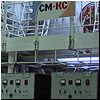 |
NEW, Oct. 12: Ground simulators (INSIDER CONTENT) In addition to maintaining the health of all Russian modules of the International Space Station, Roskosmos also has to take care of their doubles on the ground, without which it would be impossible to safely plan operations in space. |
||||||||||||||||||||
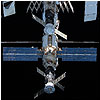 |
Docking systems (INSIDER CONTENT) In its full configuration, the Russian Segment of the ISS was expected to have a maximum of 21 docking mechanisms, including 15 operating as passive systems and six working as active. |
||||||||||||||||||||
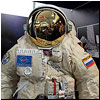 |
As the construction of the Russian segment of the International Space Station, ISS, was about to pick up in the mid-2010s, the crews onboard the outpost would also refresh their wardrobes. By 2013, NPP Zvezda developed a new version of the venerable Orlan spacesuit, which were worn by pairs of Russian cosmonauts during as many as 135 spacewalks. |
||||||||||||||||||||
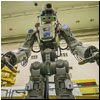 |
During the pilotless mission of Soyuz MS-14 to the International Space Station, ISS, the so-called anthropomorphic, or human-like, robot named Fedor occupied a seat inside the Descent Module of the spacecraft. According to Roskosmos, smarter successors to Fedor could one day free cosmonauts from hazardous or repetitious work in space, but the protracted and twisted history of the project raised many questions about its validity. | ||||||||||||||||||||